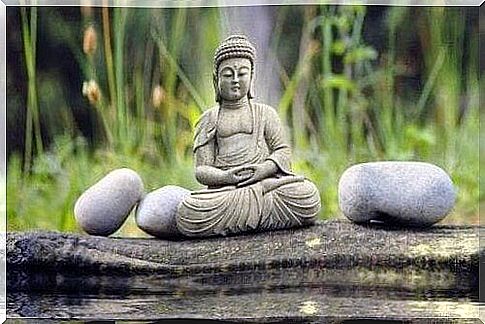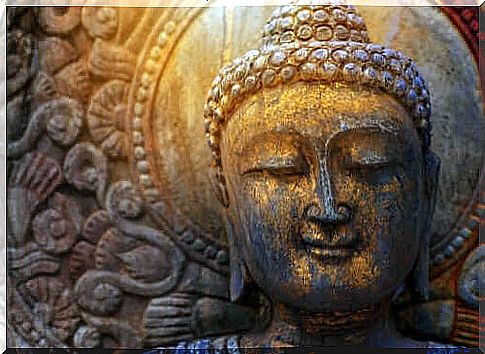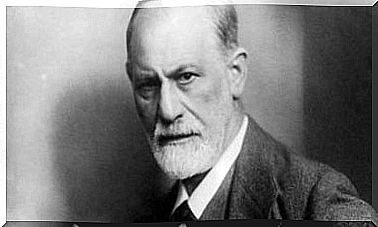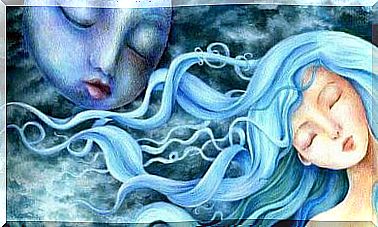The Ten Spiritual Realms Of Zen Buddhism

According to Buddhist cosmology, there are ten spiritual realms that become ten different mental states. These states subject the mind to certain feelings. In other words, certain aspects prevail in each moment.
Buddhists teach that the ten spiritual realms are not the same. Four of them are considered superior states and six of them inferior. Superior states are characterized by the prevalence of voluntary search, the desire for discovery and personal overcoming.
In the case of the lower states, what prevails is a reaction to the external world. They are states of mind in which existence is totally influenced by the surroundings. They don’t lead to evolution but to suffering. Let’s see what the ten spiritual realms are.

1. Learning
Also known as the state of “those who hear the voice”. It corresponds to those who observe reality, want to know more about it and are open to discovering the truth and understanding it.
However, this superior state depends on the external. People in this state seek the truth through what their senses capture or what others say.
2. Achievement
This is the second of the ten spiritual realms and is known as “The Awakened to the Cause.”
Corresponds to a greater degree of autonomy. Thanks to observation, effort and meditation , people are able to become aware of the “why” of things. That is, they understand the law of cause and effect and how it materializes.
3. Bodhisattva
The word Bodhisattva refers to the state of mind in which enlightenment is achieved, primarily through compassion and altruism.
Those in this state feel a genuine desire to free others from suffering and bring them to enlightenment. In this state, giving and helping are sources of happiness and peace.
4. Buddhahood, one of the ten spiritual realms
Buddhahood, or Buddhahood, is the highest of the ten spiritual realms. It is also the highest degree of nobility and what identifies those who have achieved a true awakening.
Buddhahood is a state of absolute inner peace that cannot be altered by any external circumstances. It is characterized by unlimited wisdom and compassion.
5. hell
Hell is the lowest state of the ten spiritual realms. It is a state of mind in which there is an absolute lack of freedom.
In some cases, it has to do with being totally overwhelmed by the sufferings that hold us back. In other cases, it is associated with hatred and the destructive feelings that trap and suffocate those who experience them.
6. Hunger
In the realm of hunger, unfulfilled desires prevail, which in a way is a redundancy. If there is desire, it is because there is no satisfaction. Thus, whoever wishes is doomed to lack.
“Hunger”, in a symbolic sense, causes people to feel unhappy and to adopt voracious behavior. If they can creatively transform desires, there is a will to be better.
7. Animality
What characterizes the state of animality is the attainment of immediate and irrational satisfaction. What dominates in this state is instinct or impulse, not reason or heart.
Animals fear the powerful and abuse the weak. They also make life seem like a struggle for survival rather than approaching it as a space to grow. If animality evolves, it becomes loyalty and generosity.
8. Wrath
Also called the Kingdom of Asuras, its main characteristic is its competitiveness. In anger there is a tendency to compare yourself with others , always with the desire or intention to be better than them.
Those in this state are arrogant to the weakest and flattering to the most powerful. In this case, people may have a certain degree of awareness, but they use it only for the purpose of achieving selfish goals. If it evolves, it leads to autonomy.

9. Humanity
People in this state have the ability to reason. Therefore, they can tell right from wrong.
In addition, they also exercise control over their behavior. Passion for abstract ideals and vulnerability to negativity characterize this state. They also have the potential to advance to a higher state.
10. Ecstasy
“Heavenly beings” is another name for people in this state. The pleasure and joy of satisfying desires and getting what you want is what defines this state. However, this happiness is temporary.
Happiness is different from enlightenment precisely because it is temporary. It depends on external and uncontrollable circumstances. There are no negative emotions, but this is also temporary.
These ten spiritual realms are not arranged in a continuous one-dimensional line, meaning you do not move from one state to another in a linear fashion. It is possible to go forward and backward, although one of them usually predominates in each person.









